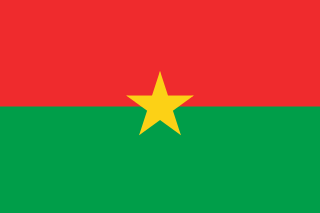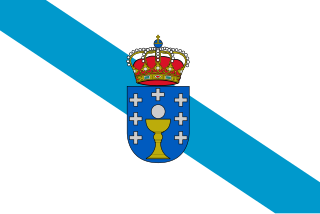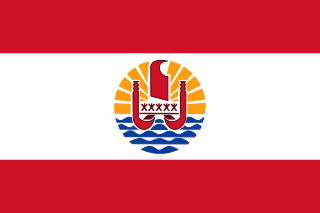 W
WThe flag of Amapá is one of the official symbols of the state of Amapá, Brazil. The current flag was introduced by Decree No. 8 of 23 April 1984.
 W
WThe national flag of Burkina Faso is formed by two equal horizontal bands of red (top) and green, with a yellow five-pointed star resting in the center. In Blazon: Per fess gules and vert, a mullet of five points Or. The flag was adopted on 4 August 1984. The flag is coloured in the popular Pan-African colours of the Ethiopian flag, reflecting both a break with the country's colonial past and its unity with other African ex-colonies. The red is also said to symbolize the revolution and the green the abundance of agricultural and natural riches. The yellow star placed over the red and green stripes is the guiding light of the revolution. The flag was adopted following the coup of 1983 which brought Thomas Sankara to power.
 W
WThe national flag of Curaçao represents the country of Curaçao as well as the island area within the Netherlands Antilles from 1984 until its dissolution in 2010.
 W
WThe flag of Galicia appeared for first time in the 19th century, probably based on the colours of the ancient medieval flags of the Kingdom of Galicia. Originally, the flag was probably a blue St Andrew's Cross over a white field – St Andrew is one of the most popular saints in Galicia. The Coat of Arms of Galicia was actually the former flag of the Kingdom of Galicia. The colors blue, white and gold were always related with Galicia. The chalice, with a silver host, and the golden crosses on blue background have been its symbol since medieval times. For some time it was thought that it was based on the flag of the maritime province of Corunna, but today it is known that the design is earlier.
 W
WThe flag of French Polynesia is the civil and state flag of the French overseas country French Polynesia. It was adopted in 1984.
 W
WThe flag of the Turkish Republic of Northern Cyprus is the national flag of the Turkish Republic of Northern Cyprus and is based on the flag of Turkey, with the colors reversed and two additional horizontal red stripes at the top and bottom. The flag was drawn by the Turkish Cypriot artist Emin Çizenel. It was adopted in 1984 by Northern Cyprus, a self-declared state that is recognized only by Turkey, after its unilateral declaration of independence in 1983.
 W
WThe coat of arms of the Pitcairn Islands was granted by royal warrant dated 4 November 1969. The flag of the Pitcairn Islands was adopted on 2 April 1984. The design was suggested by the Pitcairn Island Council in December 1980 and approved by Queen Elizabeth II in April 1984. The flag was flown on Pitcairn for the first time in May 1984, during a visit by the then Governor, Sir Richard Stratton (1980—84).
 W
WThe flag of Saint Helena was adopted on October 4, 1984. It is a defaced Blue Ensign, i.e., a blue field with the Union Jack in the upper hoist-side quadrant and the shield from the coat of arms of Saint Helena centred on the outer half of the flag. The shield features a rocky coastline and three-masted sailing ship, with a Saint Helena plover, also known as a wirebird, atop. Prior to the adoption of the current coat of arms and flag in 1984, the flag and shield showed the ship and coastal scene taken from the colonial seal of the colony.
 W
WThe flag of San Jose is the official municipal flag of San Jose, California. The current design, a triband of gold on top, white in the middle, and blue on the bottom with the city's official seal in the center, has been the official flag since 1984.